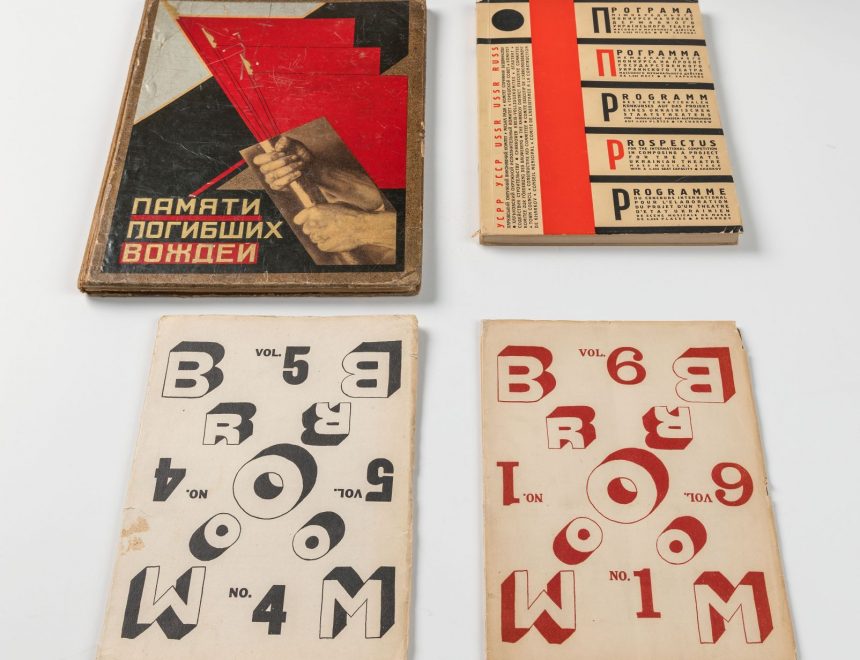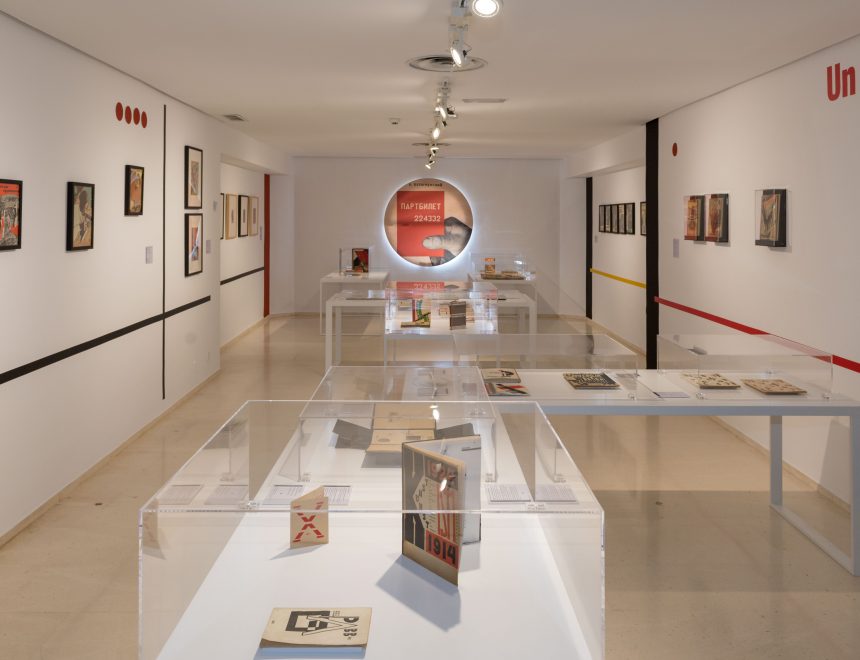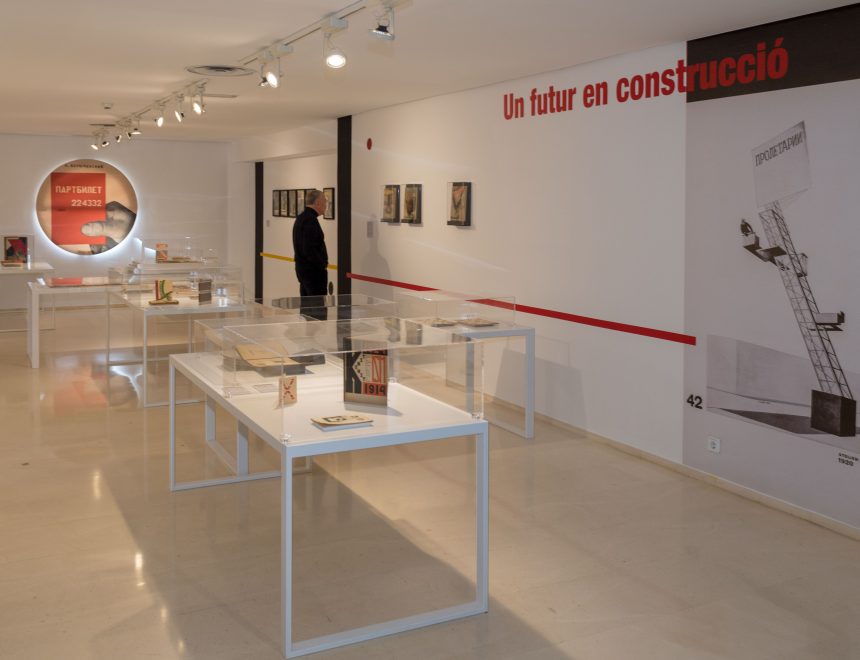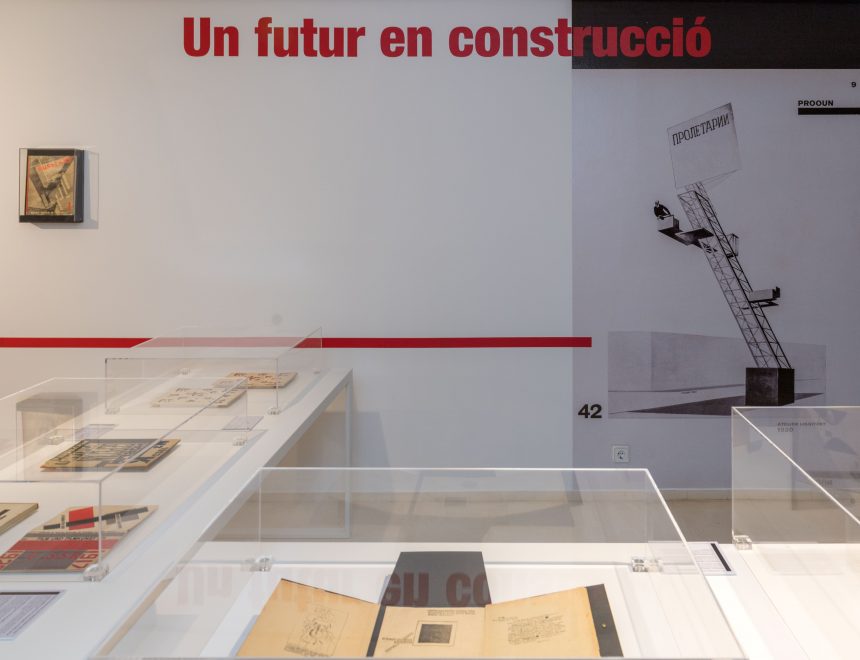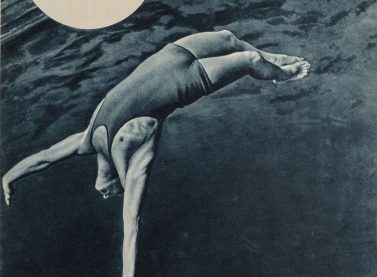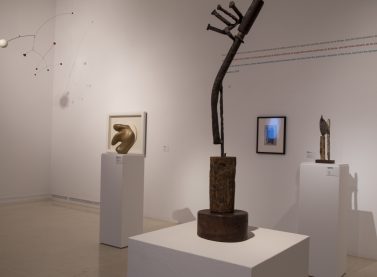A future in construction
The soviet book in the IVAM
In order to contextualise and enrich the reading of the show devoted to Alexander Rodchenko in Gallery 3, this exhibition in the Library is presenting a selection of fifty jewels of Soviet design from our collection, made by artists such as El Lissitzky, Gustav Klutsis, the brothers Vladimir and Georgii Stenberg, Kazimir Malevich or Solomon Telingater, or by key women in the development of the Russian avant-garde such as Natalia Goncharova, Varvara Stepanova, Natalia Pinus, Valentina Kulagina or Liubov Popova.
The selection focuses on a series of publications (books and magazines) that were produced during the 1920s and early 1930s in the former Soviet Union, the time of the greatest splendour of the Constructivist avant-garde and its programme of transformation of the visual culture of a country that had embarked on an accelerated process of industrialisation and transition towards socialism. It was a time when the format of books, magazines and commercial and political posters in that country underwent the greatest revolution since Mallarmé dynamited the traditional ways of reading and composing books with his poem “Un coup de dés jamais n’abolira le hasard” (1897).
In the same way that, in the early twentieth century, painting set about deconstructing the pictorial space inherited from the Renaissance perspective, some of the avant-garde movements that developed in Europe and Russia participated in a veritable revolution regarding the way of understanding not only the literary content of a book but also all the visual signs that determined its physical appearance, its facture.
Russian Constructivism, the movement to which most of the artists in this selection belonged, was one of the aesthetic trends that contributed most to a radical transformation of books, and to considering them as objects of art. In “The Topography of Typography” (1923), El Lissitzky recalled that words printed on a piece of paper are perceived not by the eye but by the ear. Therefore he proclaimed the need to develop new procedures to enhance the visual and tactile experience of reading, so that the signs employed would express the richness of the nuances of the emitter’s voice in all their complexity.
Photomontage and the new typography were the visual devices on which Constructivism based its strategy for the transformation of the book understood as architecture, as a revolutionary mechanical object for the masses converted into a powerful instrument for the construction of socialism. The covers of books and popular weekly magazines and commercial and propaganda posters became a field of unprecedented formal innovation, a territory in which the suturing of fragments of photographic images and acrobatic juggling with the written word brought about a lasting transformation of the experience of the reader, who became an accomplice and participant in the process of creation.
